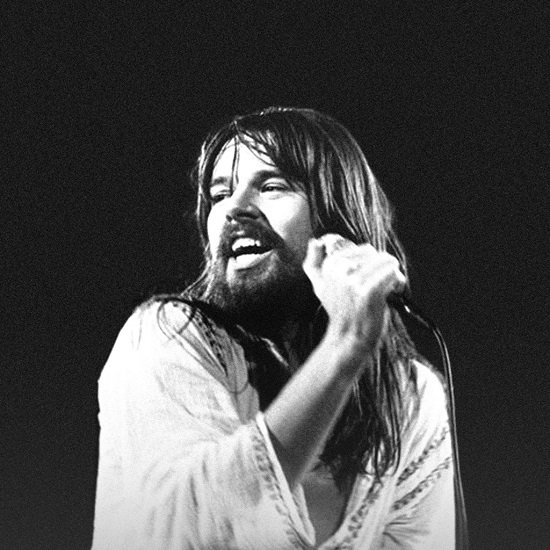
Here’s a strange coincidence that brings a bit of musical history solidly back into the present. I had almost finished this piece and was in the process of editing, stepping away from and tweaking when I felt the need to go and photograph some live musicians again. On most Sundays during the summer months, you can catch some solo performers and duos at Eccleston Yards near Victoria Station in London. The gigs are organised by Talentbanq, a company that promotes unsigned musicians, mainly in small venues and you can usually find its hands-on CEO Ray Jones there as compere and sound engineer. The first performer on stage was Erin Bowman, from New Jersey via California, playing a mixture of classic rock interpretations and original material. I was hooked from the start by her laid-back acoustic version of Tom Petty’s “American Girl”, but the last song in the set was the one that did it. In London, in 2021, Erin was doing her version of Bob Seger’s “Against the Wind”, originally released in 1980. Never underestimate the staying power of a great song.
If you’ve been seriously into music for over fifty years, then you’ve had an artist (or a few) that got away. The ones you were convinced would be massive but didn’t make it at all, or only in certain territories. One of mine was Bob Seger, with or without The Silver Bullet Band. I knew he deserved be a UK Top 20 artist, but it took about twenty years to prove me right (sort of).
It’s been a long journey, but where did it start? Nottingham’s commercial station Radio Trent in 1974, I guess. I heard “Get Out of Denver” blasting out of a tiny radio speaker and I was hooked. No doubts, no second thoughts, this was the mutt’s. Was it a Chuck Berry rehash? Of course it was, but Chuck could never have written those lyrics and his laconic drawl wouldn’t have allowed him to fire and spit them out the way Bob Seger did. This was “Tulane” on steroids and I was hooked, although it would take a couple of years before I was finally reeled in.
Bob Seger spent years grinding round the Midwestern circuit building up a massive and loyal live following before first troubling the US singles charts in 1967 and 1968 respectively with “Heavy Music” and “Ramblin’ Gamblin’ Man” which both went on to become huge live favourites. He was a classis seventies example of building up a live fanbase to help (eventually) sell records. During the period between ‘68 and ’75, his band went through personnel and name changes and moved from Capitol to Reprise and back again. Reprise had tried to break him through into the mainstream, even trying to break the UK, but they were only reaching musicians and the committed (“Get Out of Denver” was covered by Eddie and the Hot Rods and Dave Edmunds and “Rosalie” was covered by Thin Lizzy). So back to Capitol again.
What happened next was really interesting. The first Capitol album, “Beautiful Loser” was the blueprint for what was to come over the next ten years. It was a combination of up-tempo rockers (“Katmandu”) and slower, more nostalgic pieces (“Fine Memory” and “Momma”), the well-chosen cover (“Nutbush City Limits”) and the classic wistful mid-tempo pieces (“Beautiful Loser” and “Jody Girl”). Its peak chart position in the US was 131, but it went on to hit double platinum certification. It wasn’t perfect, but everyone involved knew that this was the template; more of the same would do very well indeed, but there was a way of building up a head of steam before the next studio album. The mid-70s was the era of the double live album; if you had a band that could reliably turn it on live and you put them in front of a friendly crowd you had an instant hit, so that’s what Capitol did.
“Live Bullet” was the clincher; a classic example of a live band at their peak. You got Bob Seger originals, including the classic-to-be “Turn the Page” (later covered by Metallica) and covers of “Nutbush City Limits” and “Let It Rock”. It went quintuple platinum in the US and now no-one was looking back. In the space of a year Bob Seger had arrived, at least in the US. It was always a mystery to me that no-one else in the UK seemed to get this but, with hindsight, it was just too American for the time. In 1975 Bob Seger stood a chance of being bracketed with the better bands breaking out from the pub rock scene, but was doomed in the UK after the insular and inward-looking punk explosion. It wasn’t stopping me; I grew up in a town where any sort of escape, to London or Detroit, was a good thing. And if I’m honest, the inner music snob in me likes to support an artist/band that no-one else has heard of.
As far as the North American continent (and later, Australia) were concerned, Bob Seger had made it. In the US alone, he sold over 30 million albums between 1975 and 1991, and that’s people who went to their local record shop and parted with cash for vinyl, cassette, eight track (remember that) and, towards the end, CD. The stars had aligned; the formula for the albums had been established with “Beautiful Loser”, the songwriting was perfectly honed, the production was superb (and don’t underestimate the importance of the backing vocalists from “Night Moves” onwards), Capitol was 100% behind the artist and The Silver Bullet Band was the perfect vehicle to go out and sell the songs to a live audience. Between 1975 and the peak, when “Against the Wind” hit Number One in the US album charts in 1980, Bob Seger could do no wrong in his home territory, Australia and big chunks of Europe, so why not the UK? Two obvious reasons.
The first one is about economics. Despite a reasonable amount of radio play, only the albums “Stranger in Town” and “Against the Wind” made any impact on the album charts and the singles did even worse. It was the wrong kind of music for the UK at that time despite being huge across the pond. It didn’t really make any economic sense for Capitol/EMI to invest huge amounts in touring the UK if it didn’t significantly add to record sales, and they were probably right. The Silver Bullet Band only played five gigs in Britain and I was at two of those; Glasgow Apollo (14/10/77) and Wembley Arena (21/11/1980). I’m slightly biased, but both were stunning gigs that were well-attended by wildly enthusiastic audiences and they were his first and last UK gigs. Unfortunately, you couldn’t break the UK market with five gigs. If you were counting the beans at Capitol/EMI, why would you invest any more in a territory like the UK when you could tour arenas in the USA and Canada promoting new albums and selling shedloads of merchandise. I understand that completely.
The second point is a bit more controversial, and more stalwart Bob Seger fans might want to stop reading now. I’m still a huge fan, but I couldn’t honestly say that there was one album that I wouldn’t want to skip an odd track on (with two exceptions, coming later). From 1975 onwards, Capitol/EMI were pitching Bob Seger at the traditional album market and they didn’t seem to see that the material wasn’t always even. “Night Moves”, “Stranger in Town” and “Against the Wind” had more than their fair share of classic songs, but they weren’t consistent or consistently excellent. You want reasons for that? Pressure to write brilliant new songs for albums every eighteen months while touring constantly, using the Silver Bullet Band for part of each album and The Muscle Shoals Rhythm Section for the other part, or maybe just burnout. The albums had to keep appearing regularly to satisfy the public, whether they were perfect or not. After “Against the Wind”, sales started to slow and gaps between albums increased as Seger’s family life became more important. And that should have meant the last chance for UK success, but you never know, do you?
In the summer of 1996, I was in the Pub on the Pond in Swansea having lunch with my mate Bekky when I heard a familiar voice from the CD jukebox (remember them?). It was Bob Seger and I had to go over and check it out, because it wasn’t a song I’d heard him play. It was a storming cover of the Chuck Berry classic “C’est la Vie”/”You Never Can Tell” and the album was “Greatest Hits”, released in the UK in 1994 which sort of proved my theory that Bob Seger had a huge number of classic songs but they weren’t all on the same album. It reached Number 6 in the UK and also spawned the first UK Top 40 single with “We’ve Got Tonite”. It probably helped that the songs were all FM radio-friendly and continued to be played on pockets of UK radio long after their initial release. There was a certain irony that Brits nostalgic for the 70s were buying into an album that was packed with nostalgia for 1950s/60s America. It’s a near-perfect album and the UK marketing worked like a dream.
There was another Seger album I would happily listen to all the way through, and it was intended to be the swansong. “Ride Out” was released in 2014 and it would have been a fitting famous final scene; it’s a classic album that I would recommend to anyone. Only it wasn’t the final album; as a response to the death of his long-time friend from Detroit, Glenn Frey in 2016, he released one final album, “I Knew You When” as a tribute, in 2017. That was the second encore and Bob Seger had finally left the building.
As a long-time fan, it was a validation that he finally achieved success in the UK even if it was a little late. If the run of albums starting with “Night Moves” had started a year earlier or five years later, things might have been very different, but it won’t keep him awake at night – he sold over 75 million records worldwide, wrote songs that were covered by almost everyone (there are over sixty covers of “We’ve Got Tonite”) and finished his career on his own terms. He wrote classic songs that we could all relate to and, if “Against the Wind” isn’t played at my funeral, will you all please deal with the people responsible. If you already know his work, you’ll probably understand why I’ve written this; if not, you could do a lot worse than check him out anyway. Rock and roll never forgets.
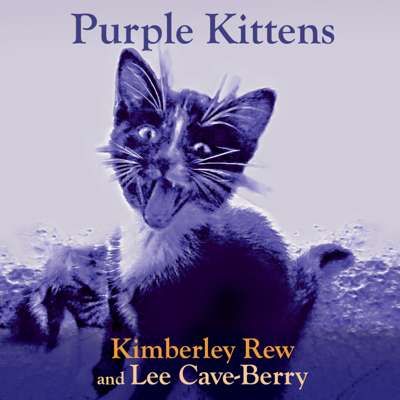
My first proper exposure to the work of Kimberley Rew was when I reviewed the retrospective, “Sunshine Walkers”, in 2020. There’s a theme running through that collection and “Purple Kittens” as well; a celebration of Englishness. Not the populist, flag-waving, “Vindaloo”-singing Englishness. Not that at all. It’s real ale at a riverside pub with the sounds of a skittle alley and maybe a Morris side performing. That kind of Englishness; the kind that’s celebrated by songwriters like Roy Harper and Ray Davies. So it’s appropriate that the album’s opener is “Penny the Ragman”.
The song’s a tribute to Kimberley’s late cousin, Penny, who, among other things, looked after the uniforms for a Morris side (a position known as Ragman) and was inspired by conversations at her wake. It’s a pretty good companion piece for The Kinks’ “The Village Green Preservation Society” as a celebration of a vanishing lifestyle. However, there’s a lot more to “Purple Kittens” than nostalgia; both Kimberley Rew (guitars and vocals) and partner Lee Cave-Berry (bass and vocals) are natural songwriters in the Nick Lowe mould, creating great songs out of eternal themes or the most mundane events and situations, even out of one repeated phrase.
Which is exactly what “Raspberry Ripple Ice Cream” does. Against a spiky, punky riff, the only lyrics are the title (apart from a slight culinary diversion into rum and raisin) sung by both Kimberley and Lee, and a bass solo. It’s just a bit of fun, but it’s done really well. “Black Ribbon” is more serious; it’s a rocking tribute to Roger Smith, of the Cambridge band Jack, who died of COVID last year. It was written by his two grandsons (aged six and eight) the ribbon of the title isn’t a mourning accessory, it refers to the band he wore round his Panama hat.
The Soft Boys cover, “Kingdom of Love”, is progressive and psychedelic with Kimberley/Lee harmonies in the chorus that evoke Nancy Sinatra and Lee Hazlewood, while Lee’s “Unsatisfactory Cats” is a whimsical Kirsty MacColl-tinted exploration of cat behaviour that cat owners/servants will identify with – I certainly did. “Wrong Song” uses the musician’s lot as a metaphor for our daily lives; live performance is a one-off thing and any mistakes are part of your history. You only get one try and you can’t fix it or remix it. There’s also a reference running through the song to Paul Simon’s “50 Ways to Leave your Lover”. Finally, “Daytime Night Time”, which closes the album, runs through the mundane cycle of life, from birth to death, in under five minutes (and that includes extended guitar riffing referencing Chuck Berry and Francis Rossi). It’s a joyous celebration of life and rock ‘n’ roll music.
“Purple Kittens” won’t be troubling the national album charts, but that won’t keep Kimberley Rew and Lee Cave-Berry awake at night. They make albums and play live for the sheer joy of it; that’s what they do and that in itself is worth celebrating. “Purple Kittens” is twelve songs celebrating lives, ways of life and sometimes just cats and ice cream, created and crafted with skill and joy, and a real love for this country. I’ll take that, thank you very much.
“Purple Kittens” is out now on KL Recording (KKL016).
Here’s the video for “Wrong Song”:
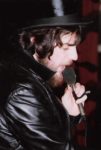 Strange the way things work out. This piece was programmed for publication today and by some quirk of fate it’s the same day that our long-time correspondent from ‘Up North’, Steve Jenner, achieved a lifetime ambition by starting his regular Sunday morning show on Caroline Flashback. Steve’s been in radio for many years, but he’s been a fan of live music for many more and 2020 has been a bit of a shock to the system. Here are some of the things he’s missed in this year of lockdown and its variants:
Strange the way things work out. This piece was programmed for publication today and by some quirk of fate it’s the same day that our long-time correspondent from ‘Up North’, Steve Jenner, achieved a lifetime ambition by starting his regular Sunday morning show on Caroline Flashback. Steve’s been in radio for many years, but he’s been a fan of live music for many more and 2020 has been a bit of a shock to the system. Here are some of the things he’s missed in this year of lockdown and its variants:
The Five Ritual ‘Live’ Things Missing from My Life This Year
 Anticipation.
Anticipation.
You get your ticket and as the date nears you start to think about it. What will the line-up be? Will they play my fave tune of theirs? How’s the new stuff going to play in a live setting? Will he/she be ‘on it’ or will it be a ‘routine gig’? Has it sold out? Will there be any proper beer?
 Going in.
Going in.
Milling about inside the venue, eyes getting accustomed to the dark, checking out the bar and the bogs, staking out a space, hearing the noise levels rise as the pre-event music kicks in and the punters start to flow through the doors. Getting that ‘tingly’ thing you do.
 Tension build-up.
Tension build-up.
Main act is habitually fashionably late and there is a palpable build up of tension / expectation in the crowd. There’s a bit of good-natured jostle near the front. Torches keep flicking on and off onstage and shadowy figures flit from mike to monitor and desk. The crowd starts a ‘stomping’ routine.
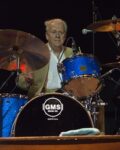 Bang.
Bang.
On they come, first song’s just a sighting shot but the second one’s a biggie. The crowd are singing like a Championship football crowd at a home game and the bass player cracks a smile at the drummer. We’re in!
 Off they go, and they’ve left nothing out there.
Off they go, and they’ve left nothing out there.
Mad stampede noises, roadie rushes to front mike and makes an adjustment and ducks away. Lights off, crescendo, on they come again and off we go into the best new album track, a Chuck Berry/Smokey Robinson/Insert name here followed by The Greatest Hit. Thangyewg’night! And you stand there, bathed in sweat, half-covered in somebody else’s beer, feeling like you’ve been run over by a truck. Time to go home via kebab/pizza/chipper/insert food here.
Here’s to 2021. Hang on in there until it happens. Big respect to everyone in the industry who have somehow found a way to survive ‘silent running’ and deepest empathy to those who have not.
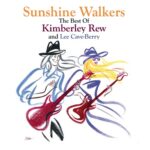 I have a huge admiration for great songwriters; crafting songs that perfectly convey little slices of life or eternal truths without knowing whether the song will reach half a dozen or millions of people or whether it will hibernate for years and emerge as a shiny (and profitable) hit. Nick Lowe was virtually potless after having a string of hits in the late seventies/early eighties when “(What’s So Funny ‘Bout) Peace, Love and Understanding?” appeared on the soundtrack of “The Bodyguard” as a Curtis Stigers cover in 1992. Kimberley Rew’s career took a slightly different trajectory; as a member of Katrina and the Waves, after several years grinding around Air Force bases and Canadian Clubs, he wrote the massive hit “Walking on Sunshine” and Eurovision winner “Love Shine a Light”, and The Bangles had a minor hit with a cover of his song “Going Down to Liverpool”.
I have a huge admiration for great songwriters; crafting songs that perfectly convey little slices of life or eternal truths without knowing whether the song will reach half a dozen or millions of people or whether it will hibernate for years and emerge as a shiny (and profitable) hit. Nick Lowe was virtually potless after having a string of hits in the late seventies/early eighties when “(What’s So Funny ‘Bout) Peace, Love and Understanding?” appeared on the soundtrack of “The Bodyguard” as a Curtis Stigers cover in 1992. Kimberley Rew’s career took a slightly different trajectory; as a member of Katrina and the Waves, after several years grinding around Air Force bases and Canadian Clubs, he wrote the massive hit “Walking on Sunshine” and Eurovision winner “Love Shine a Light”, and The Bangles had a minor hit with a cover of his song “Going Down to Liverpool”.
After Katrina’s departure in 1999, Kimberley carried on writing and recording with his partner and bass player Lee Cave-Berry. The songs were still superb, but weren’t troubling the charts; this is the period covered by the twenty-one (count them, twenty-one) songs on “Sunshine Walkers”.
Kimberley Rew is a very English lyricist, in the same vein as Ray Davies, Nick Lowe, Chris Difford and Billy Bragg; the songs couldn’t come from another country; there’s a self-deprecation and irony that you don’t find anywhere else. The other thing he has in common with these writers is that they can all conjure great songs out of the most prosaic situations: Chris Difford wrote the lyrics for the Squeeze classic, “Tempted”, on a journey to Heathrow.
And so it goes, on the album’s first song, “The Dog Song”, inspired by seeing dogs on an obstacle course for TV entertainment, is a romp through Chuck Berry territory with humorous lyrics, clever rhymes and perfect harmonies. It gets the album off to a flying start and sets the tone for a bunch of songs covering various musical styles and even a couple of those songwriters’ favourites for occasions that recur annually, “All I Want is You for Christmas” and “Happy Anniversary”.
Of the remaining dozen and a half songs, there’s absolutely no filler and several that push all of my buttons, mainly the quintessentially English ones. “Bloody Old England” is Billy Bragg meets Victor Meldrew homesickness for this grey old country set to a skiffle beat, while the national pride and clever rhymes of “English Road” wouldn’t have sounded out of place on an eighties Rockpile album. And let’s not forget “Backing Singer Blues”; I’m not a great fan of the humorous song, but this one actually works. It slightly exaggerates a situation everyone in the business can identify with, and it’s catchy as all hell.
It’s not often that an album can grab my butterfly attention span for twenty-one songs, but “Sunshine Walkers” did it; Kimberley Rew is one of our national treasures whose talents deserve much more exposure.
“Sunshine Walkers” is out now on KL Recording (KL013).
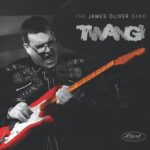 “Twang”; simple, it does what it says on the tin. OK, front cover, but you know what I mean and, actually, it does quite a lot more than it says on the tin. The twang is certainly present, but there’s a lot more to this album than Dick Dale influences. “Twang” is much more than surf or surf-punk. James Oliver pulls in many more guitar influences including Elmore James, Chuck Berry, Link Wray, Mick Green, Wilko Johnson and George Thorogood. And that’s before we even mention the legendary Dave Edmunds, whose collaborator Paul Riley mixed “Twang”. If you want another Welsh guitar connection, James is from Blackwood, home of the Manic Street Preachers – all part of the service.
“Twang”; simple, it does what it says on the tin. OK, front cover, but you know what I mean and, actually, it does quite a lot more than it says on the tin. The twang is certainly present, but there’s a lot more to this album than Dick Dale influences. “Twang” is much more than surf or surf-punk. James Oliver pulls in many more guitar influences including Elmore James, Chuck Berry, Link Wray, Mick Green, Wilko Johnson and George Thorogood. And that’s before we even mention the legendary Dave Edmunds, whose collaborator Paul Riley mixed “Twang”. If you want another Welsh guitar connection, James is from Blackwood, home of the Manic Street Preachers – all part of the service.
The album’s opener, “American Cars”, is a humorous swipe at the role of the car in rock ‘n’ roll music and the conspicuous absence of the American models in the Welsh Valleys, in a similar vein to Billy Bragg’s “A13, Trunk Road to the Sea”, but with more guitar; loads more guitar and plenty of piano as well. It sets the scene for the album; the musicianship is cracking, it’s one hundred miles per hour and there’s a lot of humour running through it.
Did someone mention Link Wray? The instrumental, “The Missing Link” is the surf equivalent of Stevie Ray Vaughan’s version of “Little Wing” as James runs through the various techniques of surf guitar, demonstrating his complete mastery of the genre (and more besides); and just like SRV’s piece, it’s a masterclass.
There are a couple of Big Joe Turner covers, “TV Mama” and “Honey Hush”, where James pulls in a few other references as well; “TV Mama” hints at Dave Edmunds’ 1970 No. 1 cover of the Dave Bartholomew classic “I Hear You Knocking”, while “Honey Hush” hints at a Phil Spector production, which Dave Edmunds also emulated for a while in the early seventies.
The James Oliver Band is much more than a simplistic tribute to sixties surf music. The stylings are complex; there are multiple tempo and rhythm changes throughout, particularly on “The Missing Link” and “Clean House” and the album’s closer, the Dick Dale classic “Misirlou” winds down with a bottom E string being gradually de-tensioned as the tune winds to a close. These are all examples of a musician with technical expertise and a clinical understanding of how a song is put together.
With the death of Cavan Grogan earlier this, maybe it’s time for James Oliver to make his breakthrough; after all, sixty-five years down the line all Chuck’s children are still out there playing his licks.
“Twang” is out now via The Last Music Company (2REV101).
Here’s a little video clip for you as well:
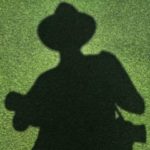 We asked Allan to share his favourite five photographs of the year and got the response we expected. ‘How can you pick favourites? It’s like asking a parent who their favourite child is’, and lots more in that vein. We eventually got him to agree to split them into five favourite monochrome and five favourite colour photos. Too good to be true really; it was, because he selected ten nice monochromes for us and said he couldn’t break it down any further. But surely ten’s just two sets of five; could we split them up? Amazing; five are male performers, five are female so here we go with the male performers, in no particular order:
We asked Allan to share his favourite five photographs of the year and got the response we expected. ‘How can you pick favourites? It’s like asking a parent who their favourite child is’, and lots more in that vein. We eventually got him to agree to split them into five favourite monochrome and five favourite colour photos. Too good to be true really; it was, because he selected ten nice monochromes for us and said he couldn’t break it down any further. But surely ten’s just two sets of five; could we split them up? Amazing; five are male performers, five are female so here we go with the male performers, in no particular order:
Steve Stott
First thing I’m saying about this is that I know Steve quite well. He’s part of a scene in Southend-on-Sea and is a very gifted fiddle and mandolin player; he’s also a really nice guy. I got to know Steve because he collaborates extensively with Phil Burdett (and you really should check him out). This shot was taken upstairs at The Railway Hotel in Southend at the launch of volumes of poetry by Phil Burdett and Ralph Dartford. Phil decided to intersperse readings of his poems with some of his songs, accompanied by Steve, meaning that Steve had some onstage downtime. And the point that I’m approaching tangentially here is that the interesting stuff doesn’t have to be front and centre; Phil is a riveting performer and I loved the expression as Steve watched him recite:
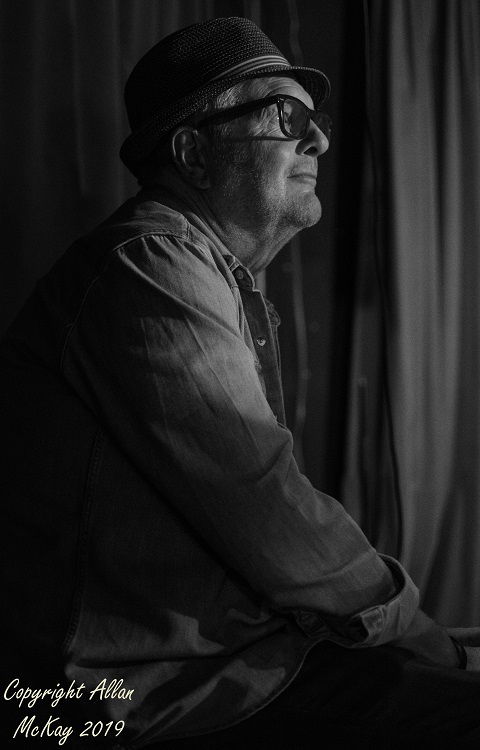
Sam Tanner
There’s a bit of a theme emerging here; Sam’s a lovely guy as well. He’s also a great keyboard player and has one of the most soulful voices I’ve ever heard. The first time I saw Sam, he was part of Mollie Marriott’s band as co-writer, keyboard player and backing vocalist. He’s also one of the members of the funk supergroup Brother Strut (check them out live and on record) and in 2019 he released his solo album. This shot was taken at the sold-out launch gig for the album at The Half Moon in Putney with an absolute all-star band and an audience packed with great musicians as well; Sam didn’t disappoint and I think this picture captured something of the essence of one of the UK’s finest soul singers:

Red Berryn (Dominic Cooper)
My first encounter with Dom was at Leek Blues & Americana Festival in October 2018. I grabbed an interesting shot during his set and we got acquainted online. What Dom does is a tribute to the godfather of rock ‘n’ roll, Chuck Berry. This isn’t just any old Chuck Berry tribute; Dom’s totally committed, knows the Berry family and was actually invited to Chuck’s funeral. This isn’t just any of Chuck’s children out there playing his licks. This shot was taken in October 2019 at the same festival when Dom’s band supported the wonderful Little Victor at The Foxlowe Theatre. As Dom went into his splits routine, I got in close just as he shot a laser-like stare directly at the camera:
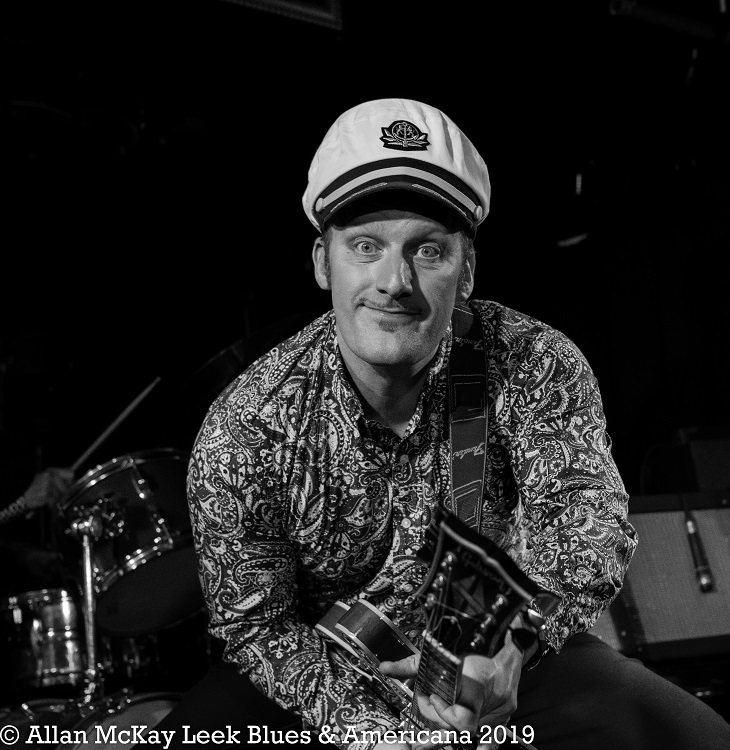
Mikey Christer
Social media has its faults, but sometimes it works wonderfully well. I photographed Mikey for the first time in 2017 when he played in Penny Riviera’s band (check her out as well) at her EP launch at The Hard Rock Café. On the back of one shot from that gig, Mikey got in touch and we’ve discovered since that we have loads of favourite bands and guitar players in common. When I heard that Penny was doing a gig at Slim Jim’s in Islington this year with Mikey in the band, it was a no-brainer. It’s interesting lighting there, but it works well with monochrome. It was great to meet up with Mikey and chew the fat and this was my favourite shot from the night:
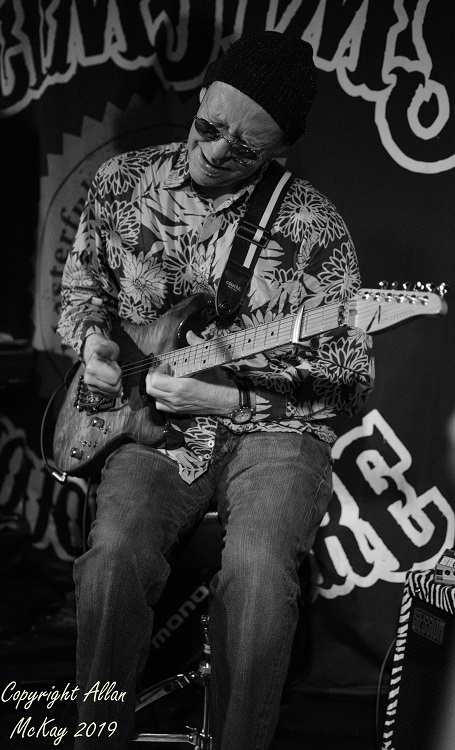
Connor Cockbain
I like to visit Brighton during The Great Escape for a day or so. The weather’s usually good and it’s nice to get away from The Smoke for a day. This year, the day was spent mostly in Caffe Nero watching some fabulous artists, but it’s always nice to pop over the road to The Mesmerist to catch some bands there. One of the bands I saw very briefly this year was The Post Romantics from Liverpool. I have some rules about gig photography and Rule One is that you don’t get the microphone directly in front of the singer’s mouth. Rule Two is that you can break the rules when you can justify it; the intensity of Connor’s stare in this shot is the justification. With minimal stage lighting and daylight through the windows, this was always a monochrome shot, which was a good thing because I had a chat with the band afterwards and they told me that Connor would convert it to black and white anyway:

 What a wonderful thing it is to be able to go, ‘yeah, I’ll have a bit of that’ when you’re in your local having a pint. So happens the promoter of the local folk club was in. So happens he’s a long-time mate of Steve Gibbons. Turns out he’s persuaded him to play an unplugged solo gig upstairs at the intimate but absolutely luverly (if we overlook the early-closing bar) Rainbow Room at the Foxlowe Centre in my current and I suspect final hometown of Leek.
What a wonderful thing it is to be able to go, ‘yeah, I’ll have a bit of that’ when you’re in your local having a pint. So happens the promoter of the local folk club was in. So happens he’s a long-time mate of Steve Gibbons. Turns out he’s persuaded him to play an unplugged solo gig upstairs at the intimate but absolutely luverly (if we overlook the early-closing bar) Rainbow Room at the Foxlowe Centre in my current and I suspect final hometown of Leek.
I haven’t seen him in 42 years, ever since I did the support rock ‘n’ roll themed disco and compere duties on a gig whilst he was touring Scotland just as his cover of Chuck Berry’s “Tulane” was in the top forty, having briefly made it into the top ten.
So, yeah, I will have a bit of that, thank you very much.
Said promoter, Dave Rhead, is also opening for SG tonight. This is brave of him as he has just fallen base over apex, stone cold sober and in full public view, over a local pavement. He’s well banged up and does well to hobble through “Leaving on a Jet Plane” and Anthony Toner’s lovely “Always Meeting my Cousins at Funerals”. To add insult to injury he managed this just outside Specsavers. Maybe he should….
When I last saw the Steve Gibbons Band they were absolutely in their pomp, top of their game. Huge great P.A. system, all the paraphernalia of a band signed to a major record company with a hit single and album in “Rollin’ On”. And he’s just finished a tour of parts of Scandinavia with a full band, so his trip to Leek for this solo low-key ‘unplugged’ set was clearly going to be something of a ‘gear change’ for him.
But he’s a trouper, is Steve Gibbons. His Dylan Project has kept playing gigs, he still packs them in on full band gigs, has played a number of big festivals in recent years, as well as solo and unplugged events like these. He is, to quote Pete Townshend, ‘road-worn’ but he cuts an elegant and dignified figure as he sets up to go.
First song is one of his early ones from the sixties. He was around in The Uglys and The Idle Race and the Dominettes before that – and the Dominettes can trace lineage back to 1960. This guy has been at it All Day. As far as I can discover, this is his first song recorded for a major label – “Wake up my Mind” was out on Pye back in 1965. Didn’t do much over here but went top twenty in Australia. They all count.
He then heads off into “The Chain” from “Maintaining Radio Silence” and “Wild Flowers” where the Dylanesque phrasing comes through and a lovely love song for Valentine’s Day, “Still in the Dark”. Can’t Get Next To You, Babe. The mystery of relationships and all that malarkey. “Graffiti Man” was an amusing aside from his observations of Birmingham life, and “Down in the Bunker” was a song that indeed took me back.
“I Got Chuck In My Car” finished off the first half of the set with more than a little nod to Jerry Reed’s “Tupelo Mississippi Flash”, a former hit single of his (apart from the fact that it’s a song about Elvis). More about that one, though, later.
Time to reflect.
The Steve Gibbons Band hit serious paydirt for probably the first time in the period 1976-1979; and he was by no means a young man by then. He was the right man at the right time, in many respects; rock ‘n’ roll and rockabilly were enjoying a resurgence, even amongst home-grown acts, and his energetic and fleet-footed reworking of Chuck Berry’s “Tulane” sort of bridged the gap between rock ‘n’ roll revisited, punk energy levels and pace and the (by then) rapidly fading pub rock scene. Also; it kind of fitted the zeitgeist. The Fonz. Grease was just about to hit VERY big. “American Graffiti”. Showaddywaddy selling truckloads, and here comes Shakin’ Stevens…..you get the picture.
But he was a whole lot more than that. In the second half of the show he began mining the rock ‘n’ roll roots as only someone who had been playing music and listening to all that amazing stuff first time around can. I honestly believe you don’t HAVE to be American to understand how great rock ‘n’ roll works (but it helps) but if you’re not, what helps a very great deal is if you were ‘around’ when these great, great songs were new to the world. And for that you really don’t need to be born in the fifties, like me; you need to be born in the forties, like Steve Gibbons. And through most of the second half of the set, he showed us how true that is. Starting with “Hey Buddy” dedicated to Buddy Holly, “Memphis Flash” (please see above!) dedicated to Elvis including a sneaky peek at “That’s Alright”, the drug mule song “Mr Jones” the roots of American rock ‘n’ roll music are laid bare by the dry, dust-bowl voice and the simple but authentic guitar chops.
The problem is – if you were born in the forties, you’re knocking on a bit now, and whereas age might have done really interesting things with his voice, he freely admits it hasn’t done him any favours in the memory department, so there are occasional meanderings and excursions, sometimes between songs, sometimes during a song, but on the rare occasions this happens he manages to scrape it all back together again and keep moving. Be under no illusions; his performance wasn’t perfect – as you might expect from someone carrying very many years on his back. But what he brought to the party meant you were absolutely forced to overlook that and to do otherwise would just be plain churlish.
This guy was more ‘Americana’ than many who currently wave that particular flag decades before anyone so much as mentioned the word. A point which is subtly underlined when he swoops into Dylan’s “Like A Rolling Stone”, Bo Diddleyfies “No Spitting on the Bus” (which might sound like Americana but is about as English in content as a pint of mild) and “Man in the Long Black Coat”.
Bizarrely, events are interrupted by the drawing of a raffle, before he draws the evening to a conclusion with a moving rendition of Rick Nelson’s “Hello Mary Lou” before being called back for an encore during which he wanders amiably through Chuck Berry’s “Memphis Tennessee”. Somewhere I imagine Dave Berry has neglected to start his gig with “Memphis Tennessee” but has decided to sing “Tulane” instead. The universe must be kept in harmony.
Yes.
Speaking with him afterwards was an absolute delight. He signed my 45s and indeed the page of our book where the Steve Gibbons Band gets a mention so I’m well chuffed. So the guy who toured America with The Who, and has shared stages with the likes of Lynryd Skynryd, ELO and Little Feat quietly packed his personal kit away, no doubt already contemplating the next stop on the seemingly endless road in whatever incarnation presents itself to him. Because that’s the deal.
Steve Gibbons is one of Britain’s last real troubadours who link directly back to the dawn of rock ‘n’ roll in the UK – had hits during (arguably) its most turbulent and explosive times – and yet whose voice and presence recall a world and a culture many miles removed.
If that moves your soul, catch him while you can. If not, well, your loss.


